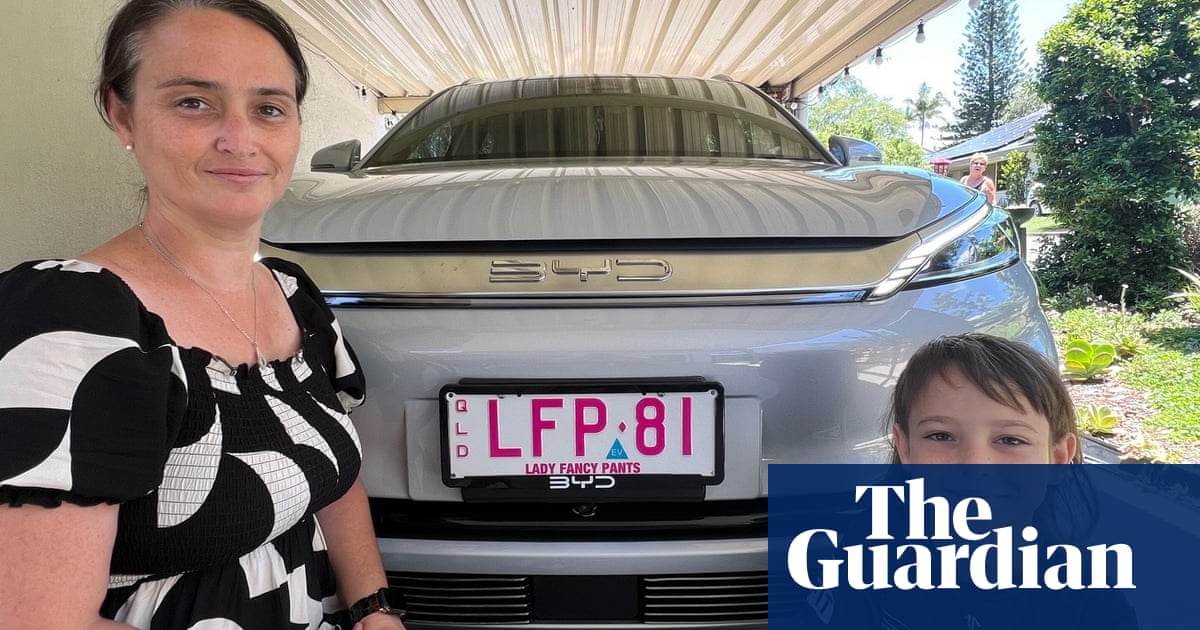An electric vehicle owner has used her car’s emergency power system to run her 11-year-old son’s lifesaving dialysis machine and another has ridden to the rescue of his neighbours after devastating storms cut power in south-east Queensland.
When the power went down following storms and flash flooding on Christmas Day, many residents immediately felt the consequences: electric gates did not work, septic tanks began to fill, air conditioners could not run and fridges began to warm as a heatwave followed.
But some electric vehicle drivers whose cars are equipped with “vehicle to load” systems – a back-up power system that allows the car to act as an emergency generator or supply for devices such as lights, laptops, TVs and refrigerators – stepped in to help out and, in some cases, save lives.
Not to spoil the party, but this would have worked with a gas car and an inverter right? Although for sure it’s much more convenient to have the feature built-in and not need to get any extra kit
Yeah, I did this for the last hurricane that knocked out our power. $10k worth of meds in our fridge for two of our kids had to stay cold & I didn’t have a generator yet. Now I have a generator & a solar battery kit.
I have a gas powered car, it has a mains outlet in the back of the center console. As far as I know this isn’t anything special or new. My car is a 2016 Chevy nothing special.
The special part is there’s no risk of carbon monoxide poisoning and it’s about 1/3 of the energy costs.
Vehicle to grid chargers mean you can use your electric car as a house backup battery when the power goes out. Not all EVs support this yet, but it should become commonplace in the next two years.
Having a static battery in the house that gets additional cycles, isn’t a big issue. Who cares if the capacity decreases by an additional 10 percent because of added cycles. Just get a battery that’s 10 percent larger from the start or add additional cells when you feel like it. In a mobile form factor, 10 percent can be a big difference. You can’t just scale up the battery when you feel like it and in the worst case scenario you would have to replace it. That’s why I would always be very conservative with using a car battery that way.
Those in car outlets are typically for small electronics. 2016 Tahoe for example is a 150 Watt max, while a typical fridge uses 300-800. So please don’t depend on it for that.
It would but you would burn a ridiculous amount of fuel for the amount of energy you could use
Yes I’ve been doing this with my prius for over a decade. The 12V ‘alternator’ on the prius is enough to sustain about 1000w which is plenty for a fridge and some lights. The engine only turns on once an hour to top off the main battery.
That’s a really cool feature. I think some electric Fords can even hook up to your house the same way as a generator.
Australia has a lot of distributed grid capacity. Some of the highest rooftop solar numbers (to the point where curtailment is an issue). And this stuff with vehicle-to-load/vehicle-to-grid capacity is a possible way to continue doubling down on that stuff.
Saul Griffith talked about some of it in this somewhat-recent interview.
It’s a weird market. If they play their cards right, Australia – particularly because of its mineral resources – will become a huge part of a green energy transition. Though they’ll have to commit quite seriously to make it happen.
Decentralizing the grid is a great way to build resilience. It saves lives. But it’s tough when you have private capital natural monopolies, especially vertically-integrated ones (as is the norm in the US), in charge of operation. You have to align incentives towards lowering cost, improving resiliency, and meeting growth. Rather than incentivizing giant, absurd capital investment, discouraging maintenance and infrastructure, and pitting the utilities against consumers.
I can’t help but smell an orphan crushing machine somewhere in this story. Or maybe just a regular old BEV ad. But this kind of stuff really does need to be the future if we want our species to survive.
I would not be surprised if EVs will be an integral part of the future power grid, though it would be better to have static power pods with batteries distributed in neighbourhoods.
Did it save his life or not, the quotes are confusing me.
Technically yes, they ran the machine off the car battery but most hemodialysis patients don’t drop dead if they miss a session for a day. Also they could have used any vehicle to drive the kid to a dialysis center or a hospital which are probably required to have generators in Australia as they are elsewhere.
So you’re saying electric cars will save the planet?
They make no sense in this context. It makes the title sound weirdly sarcastic
The pros of having a lithium battery pack the size of a full size mattress at your home
deleted by creator
It’s in the first paragraph…Jesus, you’re lazy…the power was out due to storm damage. That has nothing to do with where they live
The implication of your comment being what - that people who live in places with an unstable grid, and who can’t move (the Venn diagram there would be pretty much a circle), deserve what they get? Should fuck off and die?
Seriously, the privilege you must have and the sheltered life you must live to have come up with that for a reply is astounding…
No power grid is perfectly stable







